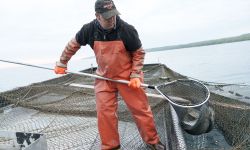Frogs, salamanders, fairy shrimp usher in spring at Michigan vernal pools

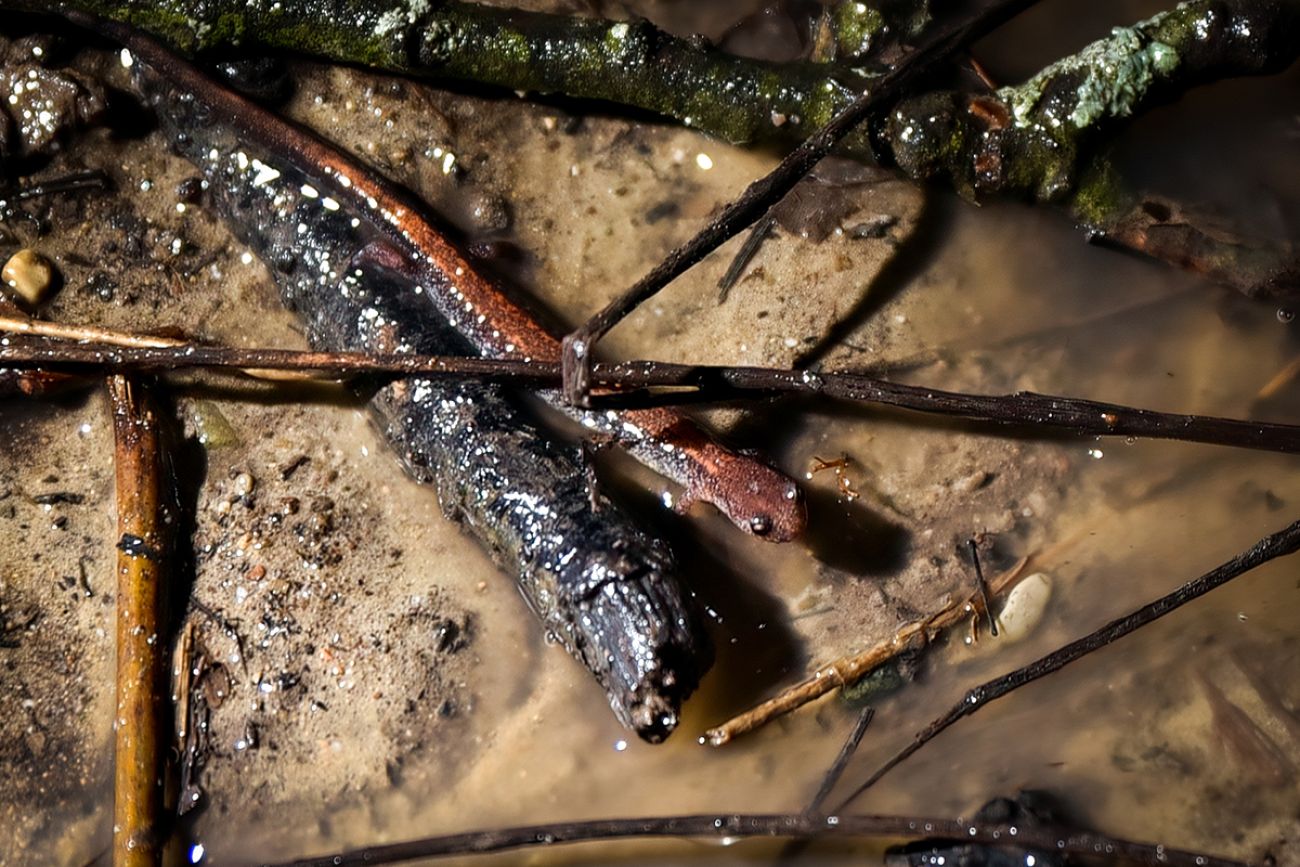
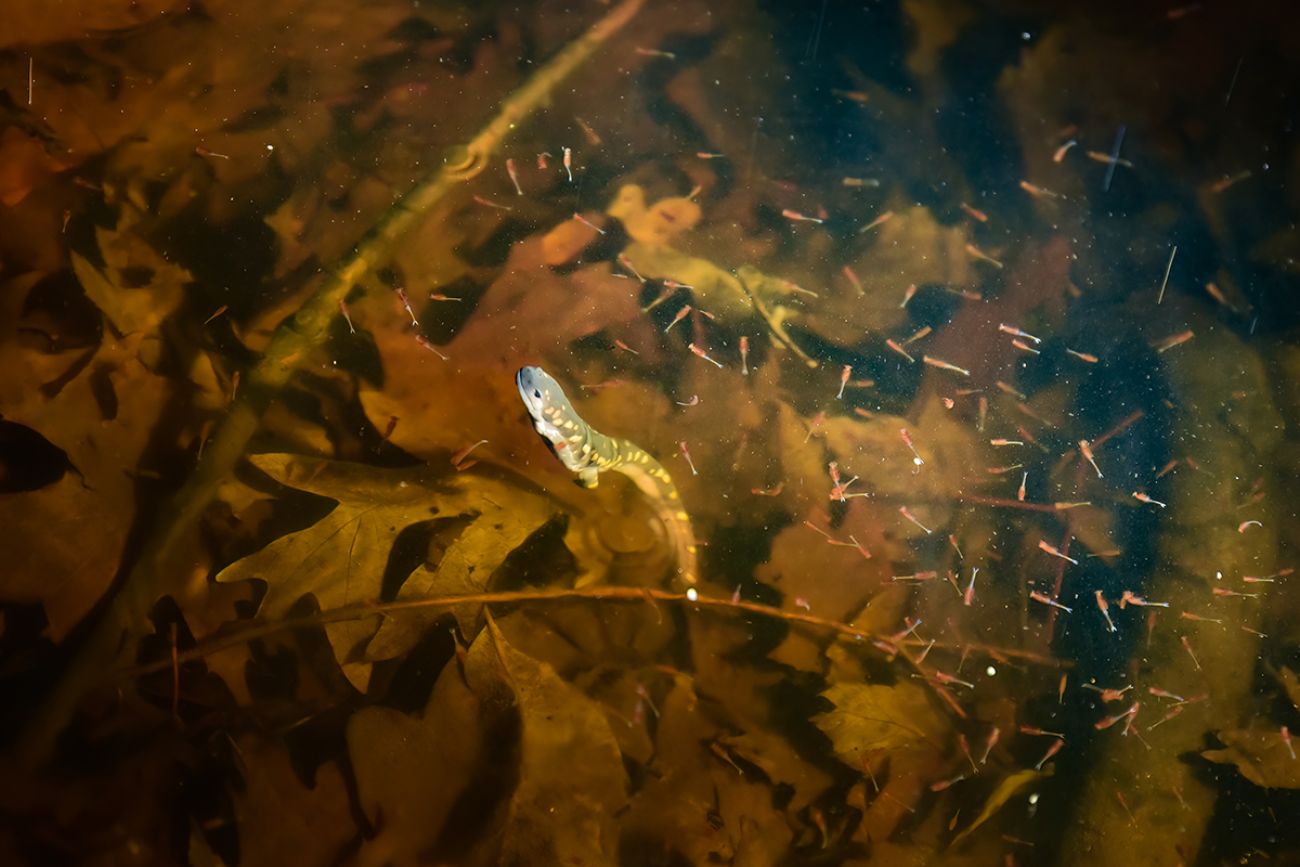

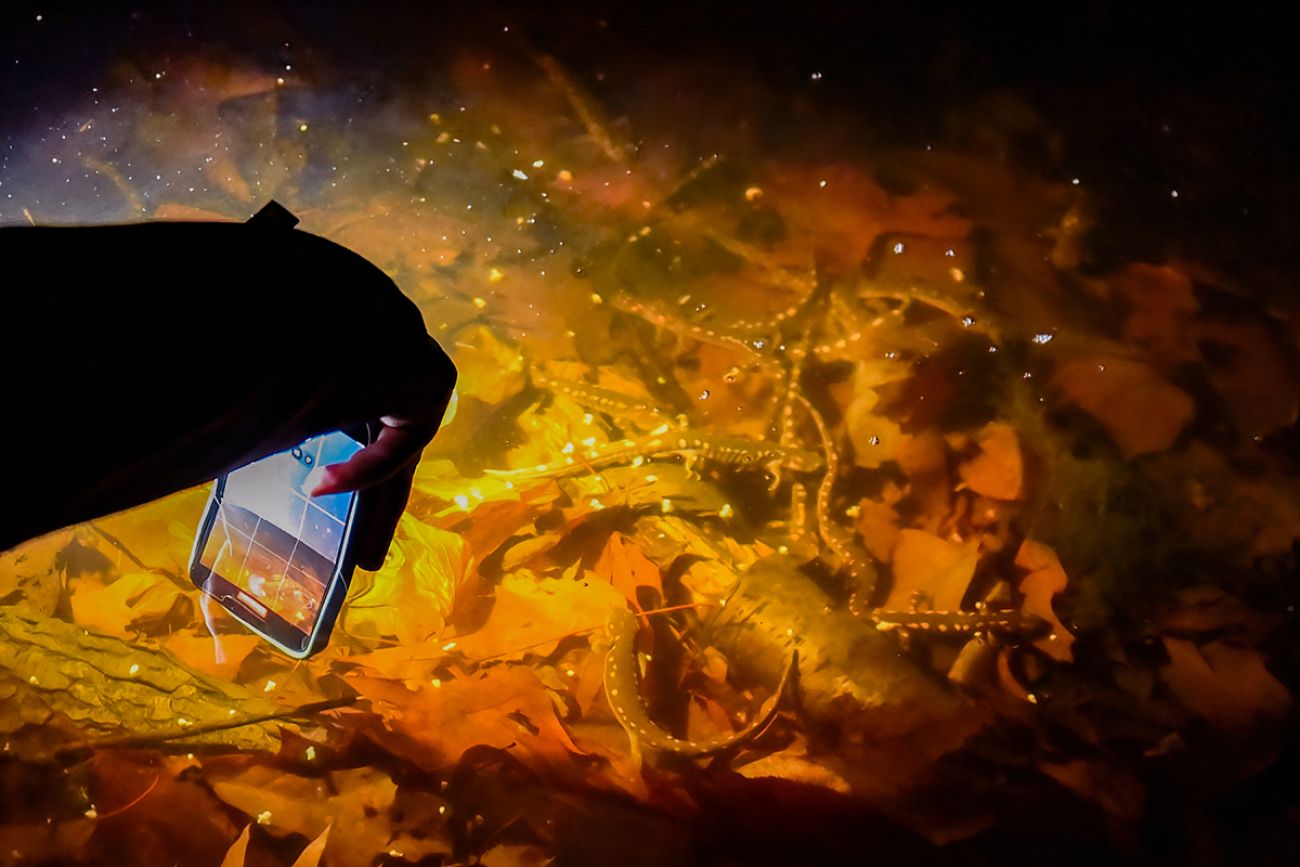
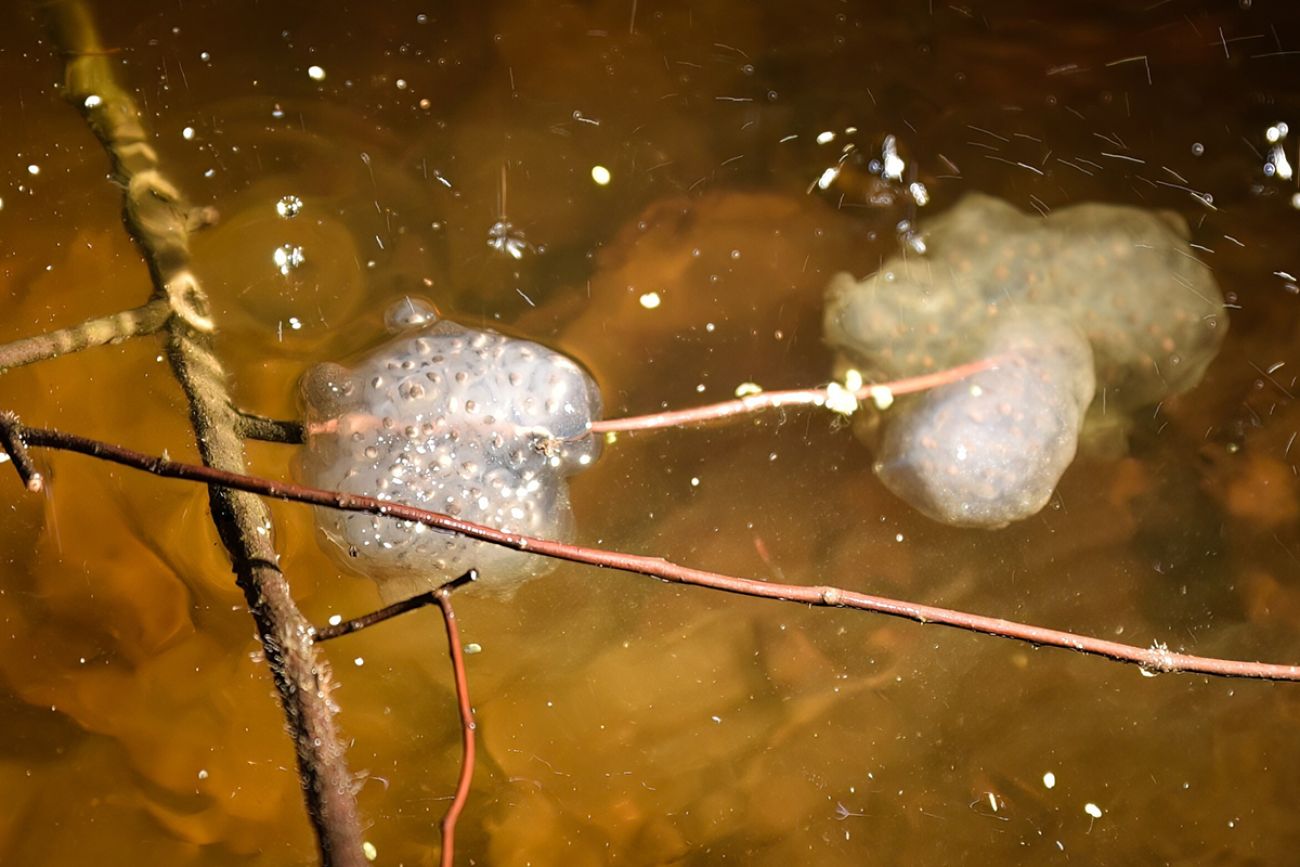

During the next couple of weeks, little pools of water in forested areas will be alive with the sounds of frogs.
It’s a gathering place for all kinds of critters who need these temporary shallow ponds for finding a mate. That’s where I was headed.
I was driving to meet Beth Weiler, a naturalist who was going to show me around a vernal pool near Ann Arbor. On the way, the rain was coming down so hard, some drivers were pulling off the road.
This article is part of The Great Lakes News Collaborative, which includes Bridge Michigan, Circle of Blue, Great Lakes Now at Detroit Public Television, and Michigan Radio. It unites newsroom resources to report on the most pressing threats to the Great Lakes and drinking water supplies, including pollution, climate change, and aging infrastructure. The independent journalism is supported by the Charles Stewart Mott Foundation.
Related:
- Michigan fishing license 2023: How much does it cost and how to apply
- How you can help Michigan’s bats amid a deadly epidemic
- Enbridge Line 5 tunnel project in Michigan delayed another 1.5 years
Now, I’m a radio reporter who also files my stories online. So, I carry a lot of gear. None of it likes water.
I was wearing a waterproof coat and rain pants and I brought an umbrella to attempt to keep my recorder and camera somewhat dry. Oh, and I brought a flashlight.
Weiler was leading me along a muddy path. The rain was not letting up. I was trying to figure out how to hold the microphone and the recorder, hold my quite dim flashlight, hold an umbrella, and keep my large camera stuffed in my raincoat.
Weiler, who is a naturalist, seemed perfectly at ease, as she carried her gear. She had a flashlight that actually lit the way.
She stopped to show me a little red-backed salamander in the path. It looked like an earthworm with eyes and tiny feet. How she saw it, I have no idea. Must have been that really bright flashlight she had and, you know, maybe years of experience and knowledge.
Weiler earned a master of science in ecosystem science, studying pollinator ecology. But, she says she’s drawn to the “unloved” critters: bugs, snakes, and salamanders.
Thunder boomed as we arrived at the small pond in the woods.
I turned on the recorder.
“It's dark. We're in the woods, it's a thunderstorm. And you say this is the best place to find what we're looking for,” I asked.
“Yes, we are at a beautiful vernal pool and a deciduous forest looking for salamanders and frogs tonight,” Weiler said, smiling. It seemed she was in her happy place.
“Why would this be a good night for salamanders and frogs,” I prompted.
“They love this warm kind of rain. And right now is the breeding migration of the salamanders. So it's the best time to see them,” she explained.
The rain was not warm.
“Let's go look for some,” I said.
“Awesome,” she said as she turned the flashlight to the water and immediately saw male spotted salamanders in the water. No females in sight.
The last time I reported on something like this was in 1999. That night I learned a lot about wood frogs. We didn’t hear any of those this night. We did see some spring peepers — much smaller than I imagined.
Since that story nearly a quarter of a century ago, the one thing I’ve heard about that I didn’t get to see back then was something called fairy shrimp.
“Oh, my gosh. I love the fairy shrimp! So, we can see a lot of those tonight. They're kind of the basis of the vernal pool. They're a little crustacean. They lay two different types of eggs when they're breeding kind of as a safety precaution,” Weiler said.
The first of the eggs are designed to survive when the vernal pool dries up during the summer. The second eggs are designed to survive freezing during winter.
Fairy shrimp are all over this pool, almost floating on top of the water. They’re only about a half inch long. They’re food for insect larvae which then become food for birds and amphibians such as frogs and salamanders.
I was thinking we'd be lucky to see a couple of salamanders. We saw a dozen or so right away.
“If you catch it on the right night. Often, a night like this, it's warmer. It's really rainy. You'll see dozens of them, sometimes hundreds in a breeding ball, which we haven't seen yet,” Weiler said.
She added, while there were a lot of males “cruising around,” they were just waiting for the females at this point.
Thankfully, the rain tapered off at bit and I could stop worrying about electronic gear and enjoy the scene a little more.
Suddenly we saw a couple of people with lights coming toward us. Rodger Bowser walked to the water’s edge.
“This is like an event every year,” he said.
“I've been told it's the big night, the big dance, prom night for amphibians,” I said, using the only cool phrases I’d learned from the amphibian and herp crowd (that’s herp for herpetology for the uninitiated).
“Yeah, for sure. For sure. This is awesome. We looked at the weather and we were like two days ago. We were like, Today is going to be the day you can't find this all over the city. This is just these vernal pools like this, you know. So it's kind of a little, little magical place right here in the middle of the city for us,” Bowser said.
After looking around on the other side of the pool, he came back to tell us there was one of those underwater salamander breeding balls that Weiler mentioned. We went to check it out.
“The breeding ball that we’re seeing right now, it’s definitely a dance. It involves kind of a series of pretty intricate movements where the males are nudging the females with their snouts, and there's some reciprocal movements like that, and then the male will actually deposit his spermatophore, which is a little sperm packet in front of the female and waggle his tail. And then the female will see and follow behind him and pick it up,” Weiler said.
There were quite a few of them swimming and swirling around each other. While there was some nudging among the salamanders, there still were not females. Nearby, though, there were some pretty large egg sacs in the water. The females must be around somewhere.
One of the reasons these ephemeral pools are important to frogs and salamanders is because most of them dry up during the summer. That means fish aren’t there to eat all the fairy shrimp and the amphibian eggs.
“The vernal pool, then, are really important habitats, breeding habitats for a number of invertebrate species and amphibian species, then, because of that lack of fish predation in those wetlands, then,” said Yu Man Lee, a conservation scientist with the Michigan Natural Features Inventory at Michigan State University.
She says vernal pools are also critical for many kinds of invertebrates. But, because of a hodgepodge set of state and federal laws, preserving them is not always possible.
“So some of them can be protected under our current regulations, but a lot of them fall through the cracks and are not,” Lee said.
That’s because they might not be connected or near other bodies of water. Many times the little ponds are located in forests.
“Keep in mind that the wood frogs and spotted salamanders, and the blue spotted (salamanders), they also need a certain amount of forest around the vernal pools before they can sustain populations,” Lee explained.
She’s part of the Michigan Vernal Pools Partnership a public/private partnership which includes several government agencies, environmental and conservation groups, and scientists. It focuses on conservation, education, and outreach to make more people aware of the importance of the vernal pools.
Back at the vernal pool in Ann Arbor, Beth Weiler says when one of these small pools is lost, so is an entire line of frogs, salamanders, newts, and those fairy shrimp.
“I feel every year that I come here, that I'm witnessing something very ancient. I mean, these animals display something called site fidelity, where they're coming back to the same pond that they hatched from to breed. And it just feels very special to me to see something like that, especially in our backyards. You don't have to go far to see something very amazing.”
Michigan Environment Watch
Michigan Environment Watch examines how public policy, industry, and other factors interact with the state’s trove of natural resources.
- See full coverage
- Subscribe
- Share tips and questions with Bridge environment reporter Kelly House
Michigan Environment Watch is made possible by generous financial support from:
Our generous Environment Watch underwriters encourage Bridge Michigan readers to also support civic journalism by becoming Bridge members. Please consider joining today.
See what new members are saying about why they donated to Bridge Michigan:
- “In order for this information to be accurate and unbiased it must be underwritten by its readers, not by special interests.” - Larry S.
- “Not many other media sources report on the topics Bridge does.” - Susan B.
- “Your journalism is outstanding and rare these days.” - Mark S.
If you want to ensure the future of nonpartisan, nonprofit Michigan journalism, please become a member today. You, too, will be asked why you donated and maybe we'll feature your quote next time!




